
Altstadt-Nord: The Heartbeat of Cologne's History and Culture
Discover Altstadt-Nord in Cologne: A captivating mix of history, culture, and modern charm with iconic landmarks, vibrant squares, and rich culinary delights.
Altstadt-Nord, located in the vibrant city of Cologne, is a mesmerizing blend of historical charm and modern flair. As the northern part of the Old Town, this neighborhood is home to some of Cologne's most iconic landmarks, including the awe-inspiring Cologne Cathedral. This UNESCO World Heritage site dominates the skyline and offers breathtaking views of the city from its towers. Wandering through Altstadt-Nord, you'll find yourself surrounded by a rich tapestry of medieval buildings, narrow cobblestone streets, and picturesque squares. The area is perfect for leisurely strolls, with a plethora of quaint cafes, traditional German beer halls, and stylish boutiques waiting to be discovered. Don't miss out on the Alter Markt and Heumarkt, two bustling squares that capture the lively spirit of Cologne. Here, you can enjoy street performances, local markets, and seasonal festivities that bring the community together. Art lovers will be thrilled with the neighborhood's cultural offerings. The Museum Ludwig showcases an impressive collection of modern art, including works by Picasso and Warhol. Just a short walk away, you can explore the Roman-Germanic Museum, which houses an extensive collection of Roman artifacts, providing a fascinating glimpse into the city's ancient past. Altstadt-Nord is also a gastronomic delight. Indulge in traditional Cologne cuisine at one of the many restaurants, where you can savor dishes like Himmel un Ääd (Heaven and Earth) and sip on Kölsch, the local beer. The vibrant nightlife scene, with its eclectic mix of bars and clubs, ensures that there's always something happening after dark. Whether you're a history buff, an art enthusiast, or simply looking to soak up the local atmosphere, Altstadt-Nord offers an unforgettable experience that captures the essence of Cologne.
Local tips in Altstadt-Nord
- Visit the Cologne Cathedral early in the morning to avoid the crowds and enjoy a serene experience.
- Wear comfortable shoes as the cobblestone streets can be tough on your feet.
- Try the local Kölsch beer at one of the traditional beer halls for an authentic Cologne experience.
- Keep an eye out for seasonal markets and festivals at Alter Markt and Heumarkt for a taste of local culture.
- Purchase a KölnCard for discounts on museums, attractions, and public transport.
Altstadt-Nord: The Heartbeat of Cologne's History and Culture
Altstadt-Nord, located in the vibrant city of Cologne, is a mesmerizing blend of historical charm and modern flair. As the northern part of the Old Town, this neighborhood is home to some of Cologne's most iconic landmarks, including the awe-inspiring Cologne Cathedral. This UNESCO World Heritage site dominates the skyline and offers breathtaking views of the city from its towers. Wandering through Altstadt-Nord, you'll find yourself surrounded by a rich tapestry of medieval buildings, narrow cobblestone streets, and picturesque squares. The area is perfect for leisurely strolls, with a plethora of quaint cafes, traditional German beer halls, and stylish boutiques waiting to be discovered. Don't miss out on the Alter Markt and Heumarkt, two bustling squares that capture the lively spirit of Cologne. Here, you can enjoy street performances, local markets, and seasonal festivities that bring the community together. Art lovers will be thrilled with the neighborhood's cultural offerings. The Museum Ludwig showcases an impressive collection of modern art, including works by Picasso and Warhol. Just a short walk away, you can explore the Roman-Germanic Museum, which houses an extensive collection of Roman artifacts, providing a fascinating glimpse into the city's ancient past. Altstadt-Nord is also a gastronomic delight. Indulge in traditional Cologne cuisine at one of the many restaurants, where you can savor dishes like Himmel un Ääd (Heaven and Earth) and sip on Kölsch, the local beer. The vibrant nightlife scene, with its eclectic mix of bars and clubs, ensures that there's always something happening after dark. Whether you're a history buff, an art enthusiast, or simply looking to soak up the local atmosphere, Altstadt-Nord offers an unforgettable experience that captures the essence of Cologne.
Iconic landmarks you can’t miss
Old Market
Experience the vibrant atmosphere of Cologne's historical Old Market, a charming square filled with cafes, shops, and stunning architecture.

Hahnentor
Discover Hahnentor, Cologne's iconic historical landmark known for its breathtaking architecture and rich medieval history, right in the city's vibrant heart.

Römerturm
Explore Römerturm, a historical landmark in Cologne that embodies the city's rich Roman heritage and offers stunning views and cultural insights.

Romans' Northern Gate
Explore the Romans' Northern Gate in Cologne, a stunning historical landmark that showcases the city's rich Roman heritage and architectural brilliance.

Römerbrunnen
Explore Römerbrunnen, a historic fountain in Cologne that beautifully combines architectural elegance with the city's vibrant culture.

Edith Stein Denkmal
Discover the Edith Stein Denkmal in Cologne—an inspiring monument honoring Holocaust victims, resilience, and the pursuit of tolerance.

Petrusbrunnen
Explore the captivating Petrusbrunnen at Kölner Dom, a historical fountain showcasing Cologne's rich heritage and stunning artistry.

Römischer Abwasserkanal
Explore the Römer Abwasserkanal, an ancient Roman sewer in Cologne, and uncover the city’s remarkable history and engineering marvels.

Frankenwerft
Discover the scenic charm of Frankenwerft in Cologne, a perfect riverside attraction for breathtaking views and cultural experiences.

Barockfassade
Discover the historical elegance of Barockfassade in Cologne, a stunning Baroque architectural marvel steeped in rich cultural heritage.

Unmissable attractions to see
Old Market
Experience the vibrant culture and rich history at Cologne's Old Market, a historical square filled with culinary delights and stunning architecture.

Time Ride
Experience Cologne's rich history like never before at Time Ride, where virtual reality meets captivating storytelling in a fascinating museum setting.

Duftmuseum im Farina Haus
Explore the heritage of fragrance at Duftmuseum im Farina Haus, the birthplace of Eau de Cologne in the heart of Cologne.

Romans' Northern Gate
Discover the Romans' Northern Gate in Cologne – an iconic historical landmark that showcases the city's rich Roman heritage and architectural brilliance.
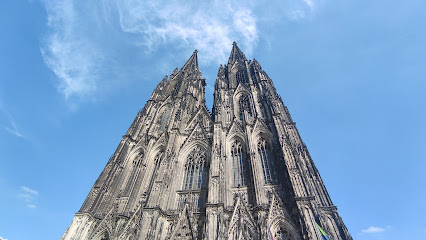
Turmbesteigung
Experience breathtaking views and history at the Turmbesteigung of the Cologne Cathedral, a must-visit landmark in Germany's vibrant city.

Römischer Abwasserkanal
Explore Cologne's Römer Abwasserkanal, a fascinating glimpse into ancient Roman engineering and urban planning beneath the city's streets.
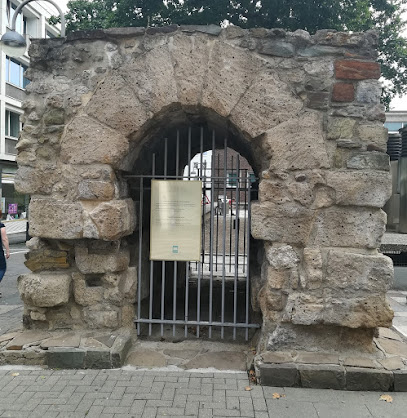
Frankenwerft
Experience the picturesque charm of Frankenwerft in Cologne, where stunning riverside views meet rich history and vibrant local culture.

Essential places to dine
Brauhaus FRÜH am Dom
Discover Brauhaus FRÜH am Dom: Cologne's iconic beer hall serving traditional German cuisine and local brews in a vibrant atmosphere.

Gilden im Zims “Heimat kölscher Helden”
Discover authentic German flavors at Gilden im Zims, a lively beer hall in the heart of Cologne offering delicious cuisine and local Kölsch.

Peters Brauhaus
Discover Peters Brauhaus in Cologne - A lively brewpub serving authentic German cuisine and craft beers in an inviting atmosphere.
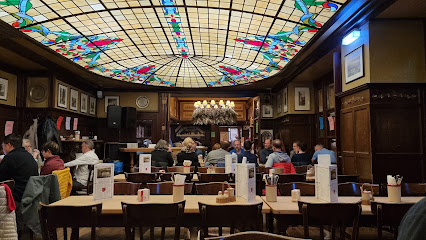
The Small Steakhouse
Experience top-quality steaks at The Small Steakhouse in Cologne - where flavor meets warmth in every bite.

Haxenhaus
Experience authentic German flavors at Haxenhaus in Cologne – where tradition meets taste by the Rhine River.

Max Stark
Discover Cologne's culinary gem at Max Stark - a gastropub serving traditional German dishes with exceptional hospitality.

RheinZeit
Experience authentic German cuisine at RheinZeit in Cologne, where tradition meets modern dining in a vibrant atmosphere.

Hänneschen und die Pfeffermühle
Discover authentic German cuisine at Hänneschen und die Pfeffermühle in Cologne—where tradition meets taste.

Restaurant Mama Leone
Savor authentic Italian flavors at Restaurant Mama Leone in Cologne – where every meal is a celebration of taste and tradition.
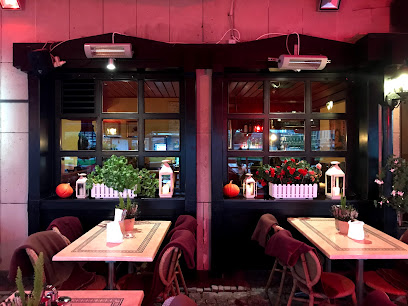
Hase Restaurant
Experience exquisite Italian-French cuisine at Hase Restaurant in Cologne's vibrant city center – where every meal is a culinary masterpiece.

Markets, malls and hidden boutiques
NEUMARKT Galerie Köln
Experience the vibrant NEUMARKT Galerie in Cologne, a shopping paradise filled with diverse shops, dining options, and an inviting atmosphere.

GALERIA Kaufhof
Experience the best shopping in Cologne at GALERIA Kaufhof - your one-stop destination for fashion, beauty, home goods, and more.

Elbenwald
Discover Elbenwald, Cologne's enchanting gift shop filled with fantasy-themed merchandise and collectibles from your favorite franchises.

Urban Outfitters
Discover unique fashion and home goods at Urban Outfitters in Cologne, a trendy destination for modern style and eclectic gifts.

APROPOS The Concept Store
Discover a stylish oasis in Cologne at APROPOS The Concept Store, where fashion meets beauty in a chic shopping experience.

Close Up GmbH
Explore the vibrant world of gifts and posters at Close Up GmbH, the perfect stop for unique souvenirs in Cologne.

Domkloster 4 GmbH
Discover unique souvenirs and local treasures at Domkloster 4 GmbH, Cologne's charming gift shop in the heart of the city.

Boutique Belgique
Explore the stylish offerings of Boutique Belgique in Cologne, where fashion meets elegance and personal service enhances your shopping experience.

Kauf Dich Glücklich Köln
Discover the latest fashion trends at Kauf Dich Glücklich Köln, a stylish clothing and shoe store in the heart of Cologne's vibrant city center.
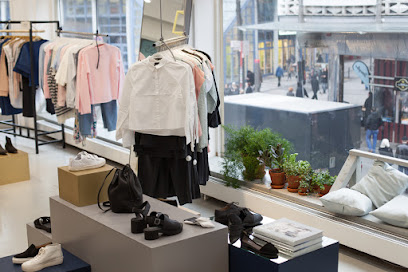
LANIUS Store Innenstadt
Explore sustainable women's fashion at LANIUS Store Innenstadt in Cologne, where style meets eco-consciousness in a chic boutique setting.

Essential bars & hidden hideouts
Papa Joe's Biersalon
Experience the vibrant pub culture of Cologne at Papa Joe's Biersalon, where great beer and hearty meals await in a lively atmosphere.

Papa Joe's Jazz Bar
Discover the vibrant atmosphere of Papa Joe's Jazz Bar, where live jazz meets crafted cocktails in the heart of Cologne.

The Corkonian Irish pub
Discover a taste of Ireland in Cologne at The Corkonian, where traditional food, drinks, and live music create a vibrant atmosphere.

Barney Vallely's
Discover the essence of Ireland at Barney Vallely's, a lively pub in Cologne with authentic food, drinks, and vibrant entertainment.

Seiberts - Classic Bar & Liquid Kitchen
Discover Seiberts - Classic Bar & Liquid Kitchen, Cologne's premier cocktail bar, offering exquisite drinks and culinary delights in a vibrant atmosphere.

The Copper Pot - Köln
Experience the vibrant atmosphere of The Copper Pot, a premier Irish pub in Cologne, featuring live music and an extensive cocktail selection.

Monkey Bar
Experience the vibrant nightlife of Cologne at Monkey Bar, where innovative cocktails and stunning views create an unforgettable atmosphere.

Sonderbar - Köln
Experience the best local brews and a vibrant atmosphere at Sonderbar, a must-visit bar in the heart of Cologne.

The Grid Bar
Experience the elegance of The Grid Bar, Cologne's premier cocktail lounge, where exquisite drinks and a chic atmosphere await.

Bierbaum
Discover the lively Bierbaum bar in Cologne, where great drinks and a welcoming atmosphere blend seamlessly for an unforgettable night out.

Local Phrases
-
- HelloHallo
[hah-loh] - GoodbyeAuf Wiedersehen
[owf vee-duh-zayn] - YesJa
[yah] - NoNein
[nine] - Please/You're welcomeBitte
[bih-tuh] - Thank youDanke
[dahn-kuh] - Excuse me/SorryEntschuldigung
[ent-shool-dee-goong] - How are you?Wie geht es dir?
[vee gate es deer] - Fine. And you?Gut. Und dir?
[goot oont deer] - Do you speak English?Sprechen Sie Englisch?
[shpre-khen zee eng-lish] - I don't understandIch verstehe nicht
[ikh fer-shtay-uh nikht]
- HelloHallo
-
- I'd like to see the menu, pleaseIch möchte bitte die Speisekarte sehen
[ikh merkh-tuh bih-tuh dee shpize-kahr-teh zay-en] - I don't eat meatIch esse kein Fleisch
[ikh ess-uh kine fly-sh] - Cheers!Prost!
[prohst] - I would like to pay, pleaseIch möchte bitte bezahlen
[ikh merkh-tuh bih-tuh beh-tsah-len]
- I'd like to see the menu, pleaseIch möchte bitte die Speisekarte sehen
-
- Help!Hilfe!
[hil-fuh] - Go away!Geh weg!
[gay vekh] - Call the Police!Rufen Sie die Polizei!
[roo-fen zee dee po-lee-tsay] - Call a doctor!Rufen Sie einen Arzt!
[roo-fen zee eye-nen ahrts] - I'm lostIch habe mich verirrt
[ikh hah-buh meesh feh-reet] - I'm illIch bin krank
[ikh been kr-ah-nk]
- Help!Hilfe!
-
- I'd like to buy...Ich möchte kaufen...
[ikh merkh-tuh kow-fen] - I'm just lookingIch schaue nur
[ikh sh-ow-uh noor] - How much is it?Wie viel kostet es?
[vee feel kaws-tet es] - That's too expensiveDas ist zu teuer
[dahs ist tsoy toy-er] - Can you lower the price?Können Sie den Preis senken?
[kern-en zee den prees zayn-ken]
- I'd like to buy...Ich möchte kaufen...
-
- What time is it?Wie spät ist es?
[vee shpayt ist es] - It's one o'clockEs ist ein Uhr
[es ist ine oor] - Half past (10)Halb elf
[hahlp elf] - MorningMorgen
[mawr-ghen] - AfternoonNachmittag
[nahkh-mit-tahk] - EveningAbend
[ah-bent] - YesterdayGestern
[geh-stern] - TodayHeute
[hoy-teh] - TomorrowMorgen
[mawr-ghen] - 1eins
[ine-s] - 2zwei
[ts-vye] - 3drei
[dry] - 4vier
[feer] - 5fünf
[foonf] - 6sechs
[zeks] - 7sieben
[zee-ben] - 8acht
[ahkht] - 9neun
[noyn] - 10zehn
[tsayn]
- What time is it?Wie spät ist es?
-
- Where's a/the...?Wo ist ein/der...?
[voh ist in/der] - What's the address?Was ist die Adresse?
[vahs ist dee ah-dreh-suh] - Can you show me (on the map)?Können Sie mir zeigen (auf der Karte)?
[kern-en zee meer tsay-gen (owf dare kahr-teh)] - When's the next (bus)?Wann kommt der nächste (Bus)?
[vahn kohmt dare naykhs-teh (boos)] - A ticket (to ....)Eine Fahrkarte (nach ....)
[eye-neh fahr-kahr-teh (nakh)]
- Where's a/the...?Wo ist ein/der...?
History of Altstadt-Nord
-
The history of Altstadt-Nord is deeply intertwined with its Roman roots, as the area was once part of the Roman settlement of Colonia Claudia Ara Agrippinensium, founded in 50 AD. The remnants of Roman architecture, including the ancient city walls and the Praetorium, can still be seen today, providing a glimpse into the life of this bustling trade hub.
-
During the Middle Ages, particularly in the 11th and 12th centuries, Altstadt-Nord emerged as a significant ecclesiastical center. The construction of the **Cologne Cathedral** began in 1248, representing both spiritual and political power. This monumental Gothic structure became a symbol of the city and influenced the architectural landscape of the neighbourhood.
-
The 14th and 15th centuries marked a period of economic prosperity for Altstadt-Nord as it became an important commercial center in the Low Countries. Numerous guilds formed during this time, fostering craftsmanship in textiles, brewing, and trade. The **Alter Markt**, a historic square, served as a focal point for commerce and social gatherings.
-
The Thirty Years' War (1618-1648) brought devastation to Cologne, including Altstadt-Nord. The city experienced sieges and plundering, which severely impacted its population and economy. Despite these challenges, the resilience of the citizens led to a gradual recovery in the latter part of the 17th century.
-
The 19th century ushered in industrialization, which transformed Altstadt-Nord. The establishment of railways and factories attracted a wave of new residents, altering the neighbourhood's demographics and urban landscape. This period also saw the rise of social movements advocating for workers' rights, reflecting the changing societal dynamics.
-
World War II had a profound impact on Altstadt-Nord, with much of the area suffering extensive damage during air raids. After the war, reconstruction efforts focused on restoring historical buildings while incorporating modern infrastructure. The rebuilding process was a testament to the city's resilience and commitment to preserving its rich heritage.
-
In recent decades, Altstadt-Nord has experienced a cultural renaissance. The neighbourhood is now a vibrant mix of historical sites, museums, and contemporary art spaces. Events such as the **Cologne Carnival** and various festivals celebrate the rich traditions and diversity of the area, making it a hub of cultural activity in the city.
Altstadt-Nord Essentials
-
Altstadt-Nord is centrally located in Cologne, making it easily accessible from other neighborhoods. The Cologne Central Station (Köln Hauptbahnhof) is just a short walk away, offering connections to local and regional trains. Tram lines 1, 7, and 9 stop nearby, while buses also provide extensive coverage. If arriving from the airport, you can take the S-Bahn line S13 or S19 directly to the central station, with a journey time of about 15-20 minutes.
-
Altstadt-Nord is compact and pedestrian-friendly, making walking the best way to explore. Public transport options include trams and buses, with several stops throughout the area. For a more local experience, consider renting a bicycle from one of the many bike-sharing services available. Taxis and ride-sharing services can also be used for convenient transportation within the neighborhood.
-
Altstadt-Nord is generally safe for tourists, but standard precautions should be taken. Avoid poorly lit areas at night, particularly around the old town's alleys. Pickpocketing can occur in crowded tourist spots, so keep your belongings close. Areas near the main train station can be more prone to petty crime, so stay vigilant in these zones.
-
In case of an emergency, dial 112 for fire and medical emergencies or 110 for police assistance in Germany. The local police station is located near the central station. For medical emergencies, several hospitals and urgent care clinics are available in the area. It's advisable to have travel insurance that covers health emergencies.
-
Fashion: Do dress respectfully, especially when visiting churches. Avoid overly casual attire. Religion: Do be mindful of local customs, such as covering your shoulders when entering religious sites. Public Transport: Do be courteous and give up your seat to elderly or disabled passengers. Don’t eat or drink on public transport. Greetings: Do greet with a friendly 'Hallo' or 'Guten Tag'. Don’t use overly casual greetings with unfamiliar individuals. Eating & Drinking: Do try local specialties like Kölsch beer and Himmel un Ääd (heaven and earth). Don’t waste food, as sharing is a common practice.
-
To experience Altstadt-Nord like a local, visit the Old Market (Alter Markt) for traditional food and drink. Explore the narrow streets and hidden courtyards, where you can find charming local shops and cafes. Attend local festivals, such as the Cologne Carnival, to immerse yourself in the city's culture. Joining a guided walking tour can also provide insights into the area’s rich history and architecture.
Nearby Cities to Altstadt-Nord
-
Things To Do in Bonn
-
Things To Do in Dusseldorf
-
Things To Do in Essen
-
Things To Do in Aachen
-
Things To Do in Koblenz
-
Things To Do in Maastricht
-
Things To Do in Spa
-
Things To Do in Genk
-
Things To Do in Liege
-
Things To Do in Hasselt
-
Things To Do in Eindhoven
-
Things To Do in Clervaux
-
Things To Do in Munster
-
Things To Do in Vianden
-
Things To Do in Durbuy













